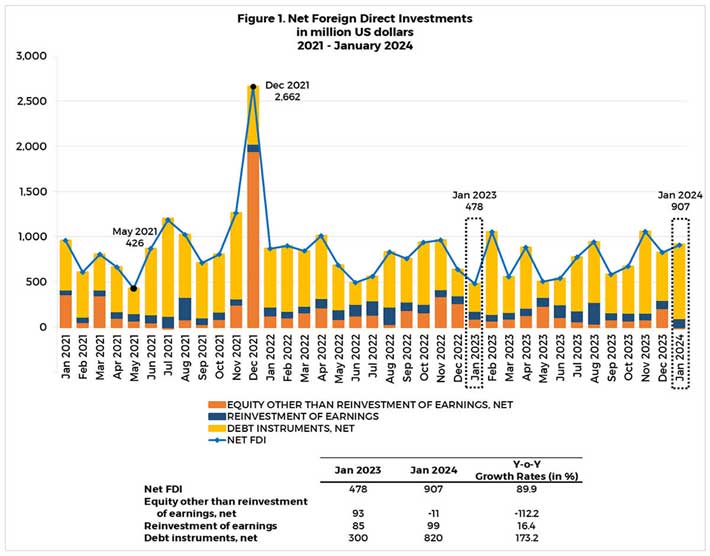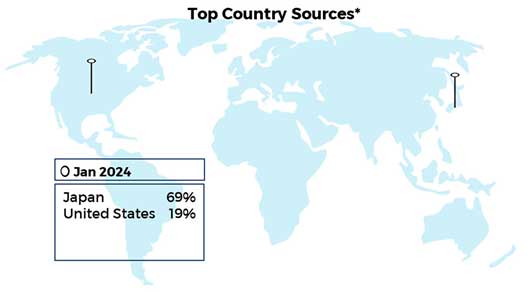Foreign direct investment (FDI) net inflows grew by 89.9 percent to reach US$907 million in January 2024 from the US$478 million net inflows in January 2023 (Figure 1).1, 2
The increase in FDI was supported mainly by the 173.2 percent expansion in nonresidents’ net investments in debt instruments to US$820 million from US$300 million in January 2023.3 Reinvestment of earnings likewise increased by 16.4 percent to US$99 million from US$85 million.
Meanwhile, nonresidents’ net investments in equity capital (other than reinvestment of earnings) posted net outflows of US$11 million in January 2024 from the US$93 million net inflows in January 2023.

Equity capital placements during the period emanated largely from Japan and the United States. Said investments were channeled mostly to the 1) manufacturing, 2) real estate, 3) construction, and 4) wholesale and retail trade industries.


1 The BSP statistics on FDI are compiled based on the Balance of Payments and International Investment Position Manual, 6th Edition (BPM6). FDI includes (a) investment by a nonresident direct investor in a resident enterprise, whose equity capital in the latter is at least 10 percent, and (b) investment made by a nonresident subsidiary/associate in its resident direct investor. FDI can be in the form of equity capital, reinvestment of earnings, and borrowings.
2 The BSP FDI statistics are distinct from the investment data of other government sources. BSP FDI covers actual investment inflows. By contrast, the approved foreign investments data that are published by the Philippine Statistics Authority (PSA), which are sourced from Investment Promotion Agencies (IPAs), represent investment commitments, which may not necessarily be realized fully, in a given period. Further, the said PSA data are not based on the 10 percent ownership criterion under BPM6. Moreover, the BSP’s FDI data are presented in net terms (i.e., equity capital placements less withdrawals), while the PSA’s foreign investment data do not account for equity withdrawals.
3 Net investments in debt instruments consist mainly of intercompany borrowing/lending between foreign direct investors and their subsidiaries/affiliates in the Philippines. The remaining portion of net investments in debt instruments are investments made by nonresident subsidiaries/associates in their resident direct investors, i.e., reverse investment.




















